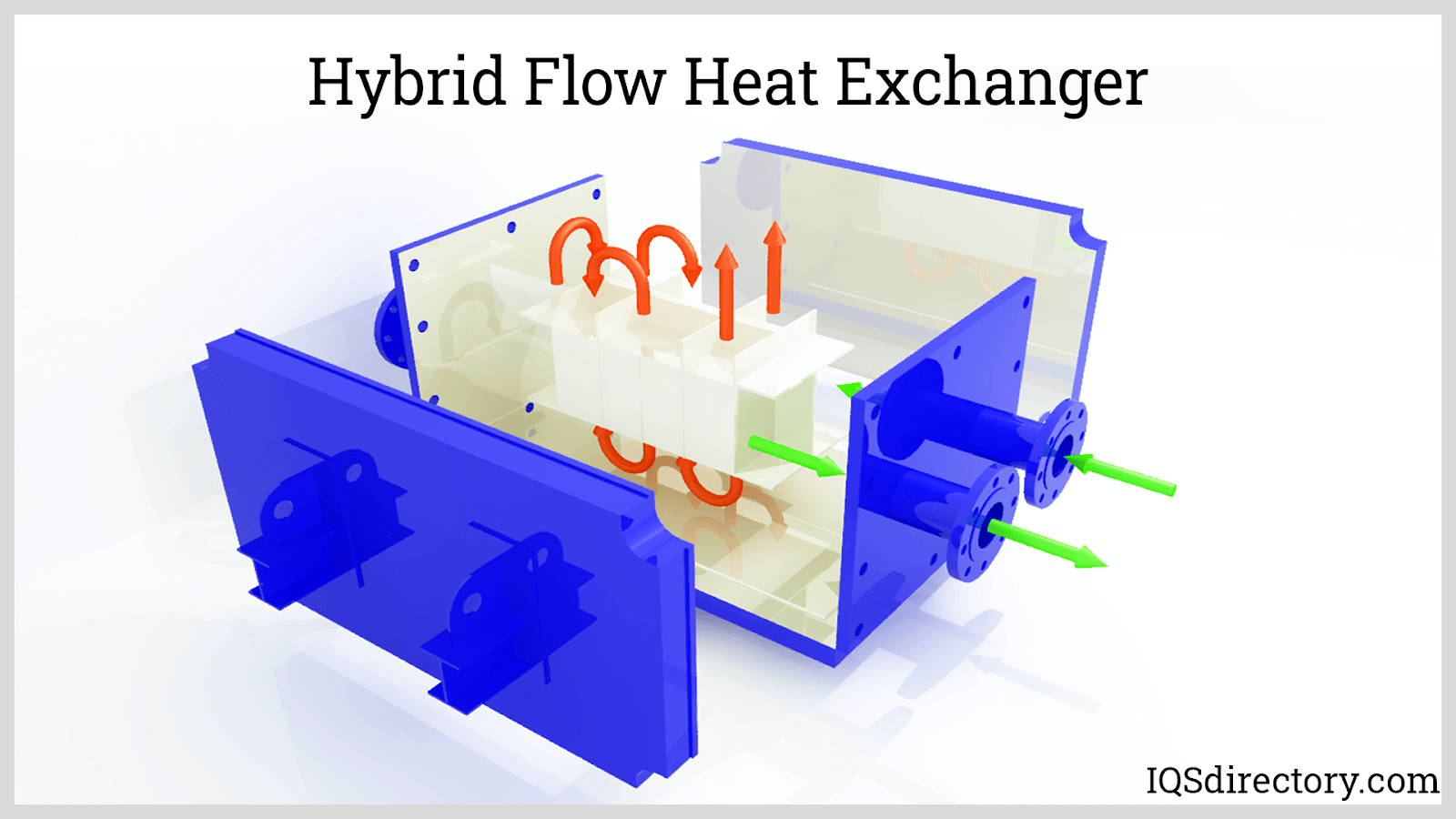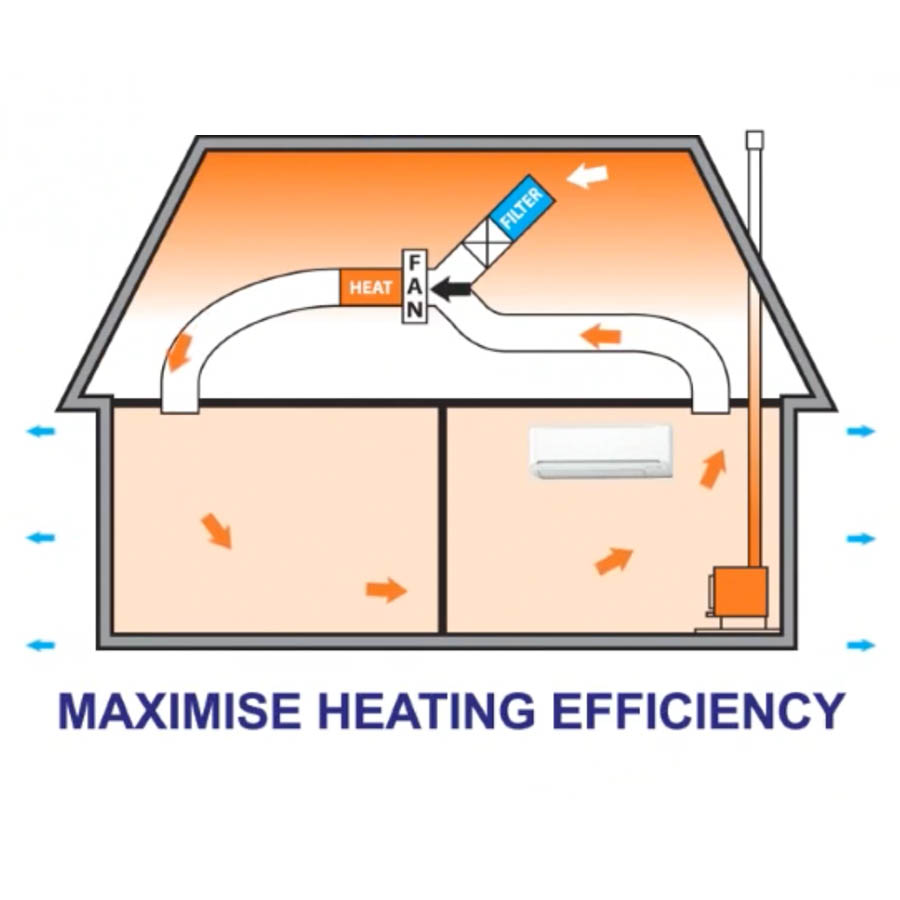Actionable Tips for Using DVS Heat Transfer Systems in Data Centers
The Function of Heat Transfer Systems in Sustainable Energy Solutions for the Future
Heat transfer systems are vital in the mission for lasting power services. They enhance thermal energy management, boosting the performance of renewable technologies. By using mechanisms like convection, transmission, and radiation, these systems decrease power losses. Their duty in solar thermal and geothermal applications is specifically significant. As innovations emerge, the potential for additional improvements increases important concerns regarding future energy methods. What developments will shape the landscape of sustainable energy?
Recognizing Heat Transfer Solutions

The Value of Thermal Energy Administration
Effective thermal power monitoring is vital for making the most of energy performance and minimizing waste in numerous systems. By managing temperature level and maximizing Heat transfer procedures, organizations can noticeably lower energy usage and operational expenses. Efficient monitoring entails the execution of sophisticated technologies and methods that keep track of and regulate thermal problems within systems, making certain that power sources are utilized effectively. In enhancement, correct thermal energy administration adds to lowering greenhouse gas discharges, straightening with worldwide sustainability objectives. It likewise enhances system integrity and performance, causing boosted product quality and longer devices life expectancy. Inevitably, prioritizing thermal power management is an essential step in the direction of creating extra lasting energy solutions and promoting a liable strategy to energy intake in commercial and property contexts.
Applications of Heat Transfer in Renewable Resource
While different renewable resource sources assure sustainability, the effective application of Heat transfer plays a vital role in their efficiency. In wind power systems, Heat transfer is used for generator element cooling, improving efficiency and durability. Geothermal power counts on efficient Heat exchange in between the planet's subsurface and the fluid flowing in the system, making the most of power removal. Biomass energy procedures additionally gain from Heat transfer, as it aids in transforming organic materials right into usable gas via pyrolysis and gasification. Furthermore, in hydropower, keeping ideal temperatures in storage tanks can boost power outcome. Each of these applications demonstrates the critical relevance of Heat transfer systems in enhancing eco-friendly power modern technologies, inevitably adding to a more sustainable power future.
Enhancing Solar Thermal Power Performance
As solar thermal power systems proceed to develop, enhancing their effectiveness has come to be crucial for making best use of power outcome. Developments in Heat transfer technologies, such as improved thermal storage space products and ingenious Heat exchangers, play a substantial duty in improving efficiency. By utilizing advanced products that have premium thermal conductivity, systems can move and capture Heat better. Furthermore, incorporating monitoring systems that comply with the sun's course assurances that enthusiasts obtain ideal solar direct exposure throughout the day. Utilizing nanotechnology in solar absorbers can additionally enhance power absorption rates. Moreover, incorporating computerized control systems helps control temperature levels and manage energy circulation efficiently, leading to decreased losses and improved total system performance. These enhancements pave the way for more lasting solar thermal power remedies in the future.
Geothermal Home Heating: A Lasting Solution
Geothermal heating presents a practical alternative for lasting energy, supplying considerable ecological advantages through minimized greenhouse gas exhausts. Its performance and cost-effectiveness make it an attractive option to typical heating unit. Difficulties associated to application has to be dealt with to optimize its possible impact.
Ecological Benefits of Geothermal
Typical home heating approaches contribute considerably to greenhouse gas exhausts, geothermal home heating provides a compelling option that minimizes environmental effect. By taking advantage of the Planet's inner Heat, geothermal systems use a renewable resource resource, markedly minimizing reliance on nonrenewable fuel sources. This technique produces marginal carbon exhausts, making it a cleaner choice for domestic and commercial heating. In addition, geothermal systems advertise energy effectiveness, as they need much less power contrasted to conventional heating systems. DVS Heat Transfer Systems. The use of geothermal power additionally assists in reducing air pollution, improving neighborhood air quality and public health. As a lasting remedy, geothermal heating sustains environment modification reduction initiatives, positioning itself as a vital element in the change towards a greener future
Performance and Cost-Effectiveness
How does geothermal heating gauge up in terms of efficiency and cost-effectiveness compared to typical heating systems? Geothermal home heating shows premium performance, commonly attaining a coefficient of performance (POLICE) of 3 to 5, suggesting it creates 3 to 5 devices of Heat for each system of electrical energy consumed. This performance translates into reduced operating costs, especially in areas with secure geothermal sources. browse around here First installation costs can be more than standard systems; nevertheless, lasting cost savings on power costs and decreased upkeep expenses can balance out these ahead of time investments. Furthermore, lots of governments incentivize geothermal systems with discounts and tax credit scores, improving their cost-effectiveness. On the whole, geothermal home heating emerges as a lasting and financially practical alternative to even more standard home heating services.
Application Challenges and Solutions
Various difficulties can impede the widespread implementation of geothermal heating unit, regardless of their clear benefits as a lasting energy service. High first installment costs commonly discourage financiers and house owners, making financing a significant barrier. Additionally, the geographical limitations of ideal geothermal sites limit access in particular regions. Neighborhood laws and allowing processes can additionally make complex job development, resulting in hold-ups. Moreover, public understanding and understanding of geothermal systems continue to be low, impeding acceptance. To attend to these obstacles, targeted education projects can boost public understanding, while government motivations might alleviate economic worries. Collaborating with regional authorities to simplify laws might facilitate smoother project approvals, inevitably advertising the adoption of geothermal heating as a sensible, lasting power alternative.
Developments in Heat Transfer Technologies
Developments in Heat transfer innovations play a crucial duty in boosting power efficiency and sustainability. Advanced Heat exchangers and phase change materials go to the forefront of these advancements, supplying considerable enhancements in thermal management. These technologies not just optimize power usage but also contribute to decreasing ecological effect in numerous applications.
Advanced Heat Exchangers
Advanced Heat exchangers play a necessary role in boosting energy efficiency throughout numerous applications in lasting power solutions. These tools promote the transfer of Heat in between two or even more liquids, markedly decreasing power intake in procedures such as industrial heating, cooling, and power generation. Technologies in materials and design, such as using nanofluids and small arrangements, have actually resulted in boosted thermal efficiency and reduced size needs. Additionally, innovations in electronic tracking and control systems permit maximized operation, additional increasing effectiveness. By decreasing waste Heat and optimizing energy recovery, advanced Heat exchangers add to lower carbon impacts and support the shift toward ecologically friendly modern technologies. Their continued development is essential for achieving international energy sustainability goals.
Stage Change Products
The integration of stage change products (PCMs) right into Heat transfer innovations represents a considerable development in energy management and effectiveness. PCMs absorb and release thermal energy during their phase modifications, allowing reliable temperature regulation in structure products and energy systems. By saving excess Heat throughout peak periods and launching it when need boosts, PCMs contribute to pack shifting and power preservation - DVS Heat Transfer Systems. This ability improves the performance of renewable resource systems, especially in solar thermal applications. Furthermore, PCMs can improve the thermal convenience of interior settings, decreasing reliance on conventional home heating and cooling techniques. As innovations in PCM formulas continue to emerge, their duty in lasting power services is positioned to grow, providing encouraging methods for future research and application

Future Prospects for Heat Transfer in Sustainable Energy
As the demand for sustainable power remedies proceeds to increase, the role of Heat transfer systems is ending up being progressively essential in shaping future technologies. Technologies in styles and materials are expected to improve performance in Heat transfer, lowering energy losses in various applications. The combination of sophisticated thermal storage systems, such as stage adjustment materials and thermochemical storage space, will make it possible for much better management of power sources. Research right into nanofluids and biomimetic Heat exchangers may other further enhance thermal efficiency. The fostering of wise technologies will enable for real-time tracking and flexible control of Heat transfer processes. These advancements are poised to significantly add to the overall effectiveness and sustainability of energy systems, paving the means for an extra energy-efficient future.
Often Asked Inquiries
Exactly How Can Individuals Apply Heat Transfer Solution in your home?

People can carry out Heat transfer systems at home by setting up energy-efficient devices, utilizing radiant heating, and optimizing insulation. These procedures improve power performance, minimize prices, and advertise lasting methods in property settings.

What Are the Costs Linked With Installing Heat Transfer Solutions?
The expenses related to installing Heat transfer systems differ commonly, generally incorporating equipment, setup labor, and upkeep. Aspects such as system type, home dimension, and local policies considerably influence the general expense included.
Are There Federal Government Incentives for Heat Transfer System Installations?
Government motivations for Heat transfer system installments differ by region and can include tax obligation gives, credit ratings, and discounts. These economic advantages intend to urge fostering, inevitably advertising power effectiveness and lowering ecological influence within neighborhoods.
How Do Heat Transfer Equipments Impact Power Bills?
Heat transfer systems notably influence power expenses by optimizing power performance. By boosting the transfer of Heat, these systems lower power consumption, bring about reduced utility expenses and producing a more lasting technique to power administration.
What Upkeep Is Required for Heat Transfer Equipments?
Maintenance for Heat transfer systems consists of regular inspections, cleansing of components, inspecting fluid degrees, making sure proper insulation, and replacing worn components. These jobs aid maintain effectiveness, avoid break downs, and extend the system's operational life-span.
These systems help with the activity of thermal power from one medium to another, making it possible for the transfer of Heat for home heating, power, or air conditioning generation objectives. Geothermal energy counts on reliable Heat exchange between the earth's subsurface and the liquid flowing in the system, making the most of power removal. Furthermore, geothermal systems promote energy performance, as they need much less power contrasted to traditional home heating systems. Advanced Heat exchangers play a vital role in improving power efficiency throughout Learn More various applications in sustainable power options. Heat transfer systems notably affect energy costs by maximizing power efficiency.